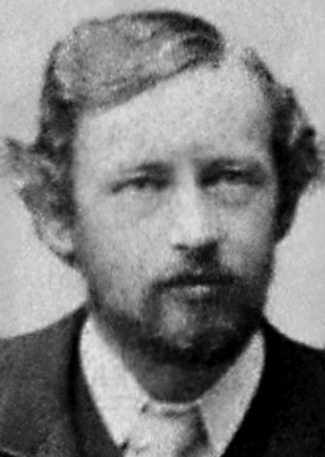Content deleted Content added
m |
m Tags: Mobile edit Mobile app edit iOS app edit App section source |
||
Line 27: Hinton taught at [[Cheltenham College]]<ref>{{cite book|title=Cheltenham College Register, 1841–1889|year=1890|publisher=Bell|location=London|url=https://archive.org/details/cheltenhamcolle00huntgoog}}</ref> while he studied at [[Balliol College, Oxford]], where he obtained his B.A. in 1877. From 1880 to 1886, he taught at [[Uppingham School]] in [[Rutland]], where Howard Candler, a friend of [[Edwin Abbott Abbott]]'s, also taught.<ref>British Society for the History of Mathematics [http://www.dcs.warwick.ac.uk/bshm/zingaz/U.html Gazetteer], {{webarchive|url=https://web.archive.org/web/20110516221817/http://www.dcs.warwick.ac.uk/bshm/zingaz/U.html |date=16 May 2011 }}</ref> Hinton also received his M.A. from Oxford in 1886. In 1880, Hinton married Mary Ellen Boole, daughter of [[Mary Everest Boole]] and [[George Boole]], the founder of mathematical logic.<ref>{{cite book | title=The Life and Legacy of G. I. Taylor | first=George | last=Batchelor | author-link=George Batchelor | publisher=Cambridge University Press | year=1994 | isbn=0-521-46121-9 | page=[https://archive.org/details/lifelegacyofgita0000batc/page/7 7] | url=https://archive.org/details/lifelegacyofgita0000batc/page/7 }}</ref> The couple had four children: George (1882–1943), Eric (born 1884), William (1886–1909)<ref>''Smothers in Orchard'' in ''Los Angeles Times'', 27 February 1909.</ref> and [[Sebastian Hinton|Sebastian]] (1887–1923) (inventor of the [[jungle gym]] and father of [[William H. Hinton|William]] and [[Joan Hinton]]). In 1883, he went through a marriage ceremony with Maud Florence Weldon, by whom he had had twin children, under the assumed identity of John Weldon. He was subsequently convicted of [[bigamy]] and spent three days in prison, losing his job at Uppingham.<ref name="lightman266">{{cite book | title=Victorian science in context | author=Bernard V. Lightman | publisher=University of Chicago Press | year=1997 | isbn=0-226-48111-5 | page=266 }}</ref> His father [[James Hinton (surgeon)|James Hinton]] was a radical advocate of polygamous relationships,<ref>[http://higherspace.wordpress.com/2009/06/12/rucker-on-boole-stott-hintons-bigamy/#_ftn8 A cultural history of higher space, 1853-1907] [work in progress] Mark Blacklock</ref> and according to Charles' mother James had once remarked to her: "Christ was the saviour of Men but I am the saviour of Women and I don't envy him a bit."<ref>Havelock Ellis papers, British Library.</ref> In 1887, Charles moved with Mary Ellen to Japan to work in a mission before accepting a job as headmaster of the Victoria Public School. In 1893 he sailed to the United States on the SS ''Tacoma'' to take up a post at [[Princeton University]] as an instructor in mathematics.<ref name="lightman266" /> In 1897, he designed a gunpowder-powered baseball [[pitching machine]] for the Princeton baseball team's batting practice.<ref name=lightman266/><ref>Hinton, Charles, "A Mechanical Pitcher", ''[[Harper's Weekly]]'', 20 March 1897, p. 301–302.</ref> The machine was versatile, capable of variable speeds with an adjustable breech size, and firing curve balls by the use of two rubber-coated steel fingers at the muzzle of the pitcher.<ref>Hinton, Charles, "The Motion of a Baseball", ''The Yearbook of the Minneapolis Society of Engineers'', May, 1908, p. 18–28.</ref> He successfully introduced the machine to the [[University of Minnesota]], where Hinton worked as an assistant professor until 1900, when he resigned to move to the [[U.S. Naval Observatory]] in [[Washington, D.C.]]<ref name=lightman266/> | |||
 Article Images
Article Images